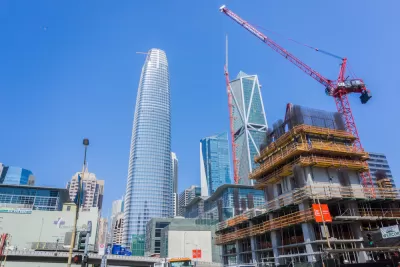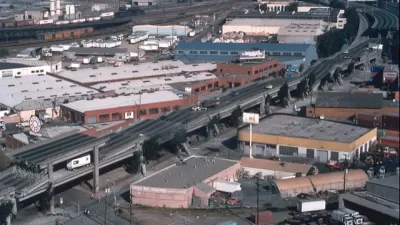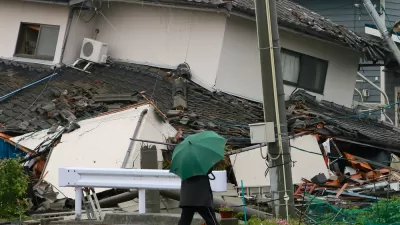The city has proposed tighter rules for new construction and a more active approach to securing existing tall structures from collapse.

Seismic activity has spooked San Francisco officials, who are now calling for stricter retrofitting measures, Rong-Gong Lin II writes. "First, a centerpiece of San Francisco's new downtown, the 58-story Millennium Tower, started sinking and tilting. Then last week, the city's new $2.26 billion transbay bus station was abruptly shut after cracks were found in two steel beams."
The city has released a list of over 150 tall buildings, including many constructed prior to modern seismic codes, as a prelude to assessing their need for retrofits. "The inventory comes with a sweeping proposal to more closely examine the city's skyline with an eye of making costly fixes to towers that could collapse amid major shaking. Officials are also calling for rules for new construction, aimed at preventing sinking of buildings as well as making tall buildings even stronger to resist wobbling in an earthquake."
These calls, Lin says, represent heightened rhetoric from several months ago, "when officials emphasized the difficulty in identifying the city's largest vulnerable buildings, such as those made of brittle concrete." Extant city laws, Lin continues, have not been particularly effective in requiring or spurring retrofits. "Current city law does require a seismic retrofit when two-thirds of a building's floors are renovated. But that almost never happens to tall buildings, when only a small fraction of the building undergoes construction at any given time."
FULL STORY: San Francisco Takes Unprecedented Step to Protect High Rises During Earthquakes

Alabama: Trump Terminates Settlements for Black Communities Harmed By Raw Sewage
Trump deemed the landmark civil rights agreement “illegal DEI and environmental justice policy.”

Planetizen Federal Action Tracker
A weekly monitor of how Trump’s orders and actions are impacting planners and planning in America.

The 120 Year Old Tiny Home Villages That Sheltered San Francisco’s Earthquake Refugees
More than a century ago, San Francisco mobilized to house thousands of residents displaced by the 1906 earthquake. Could their strategy offer a model for the present?

In Both Crashes and Crime, Public Transportation is Far Safer than Driving
Contrary to popular assumptions, public transportation has far lower crash and crime rates than automobile travel. For safer communities, improve and encourage transit travel.

Report: Zoning Reforms Should Complement Nashville’s Ambitious Transit Plan
Without reform, restrictive zoning codes will limit the impact of the city’s planned transit expansion and could exclude some of the residents who depend on transit the most.

Judge Orders Release of Frozen IRA, IIJA Funding
The decision is a victory for environmental groups who charged that freezing funds for critical infrastructure and disaster response programs caused “real and irreparable harm” to communities.
Urban Design for Planners 1: Software Tools
This six-course series explores essential urban design concepts using open source software and equips planners with the tools they need to participate fully in the urban design process.
Planning for Universal Design
Learn the tools for implementing Universal Design in planning regulations.
Clanton & Associates, Inc.
Jessamine County Fiscal Court
Institute for Housing and Urban Development Studies (IHS)
City of Grandview
Harvard GSD Executive Education
Toledo-Lucas County Plan Commissions
Salt Lake City
NYU Wagner Graduate School of Public Service




























